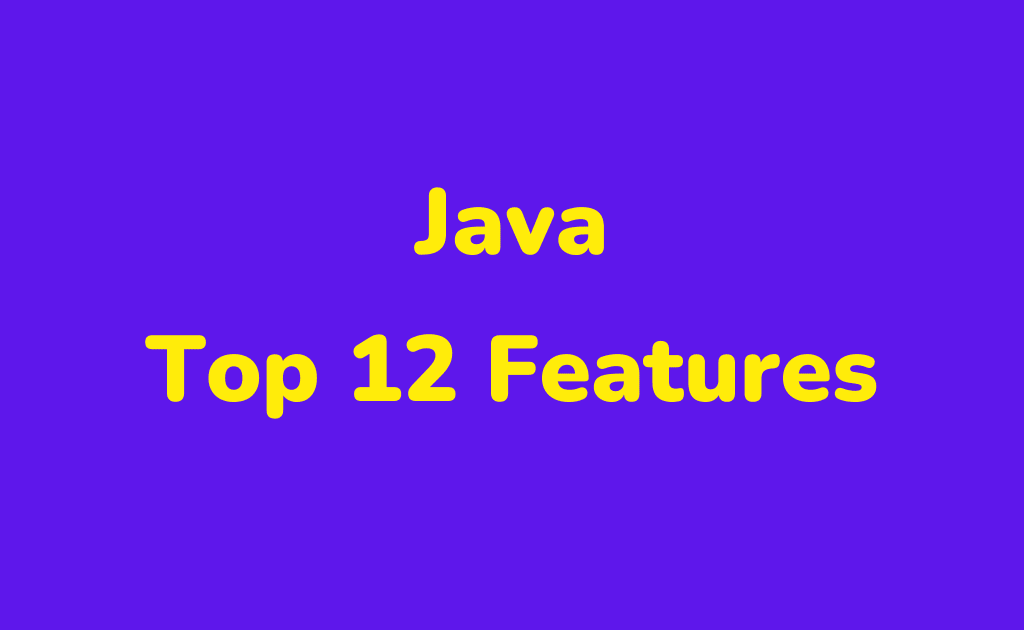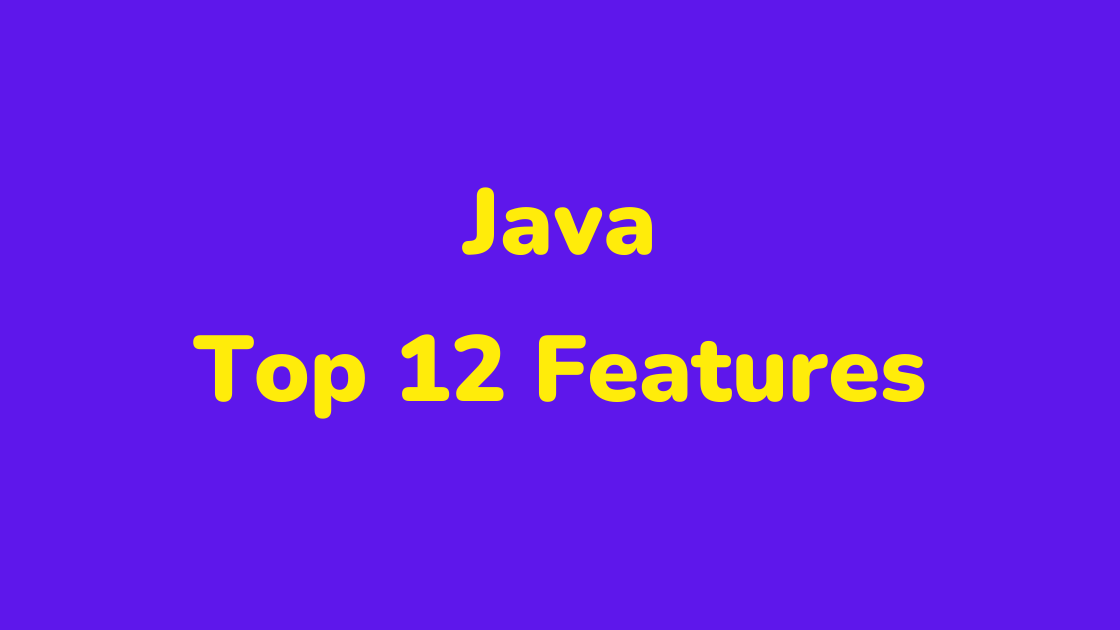Understand the features of Java Programming Language that make it one of the most powerful languages for developing enterprise-grade applications.

Simple
Java is a simple programming language because of the following factors:
-
It eliminated the concept of multiple inheritance and pointers which were confusing and complex to work with.
-
It contains a program called garbage collector which is used to collect unreferenced (unused) objects for improving the performance of a program.
-
It contains user friendly syntax for developing applications.
Platform Independent
A program or technology is said to be platform independent if it can be run on all available operating systems.
A Java program compiled on one operating system can be run on any other operating system. When a Java program is compiled, it generates a .class file then that generated .class file can be run on any operating system.
Architectural Neutral
A language or technology is said to be architectural neutral if it can run on any available processor.
Languages like C, and C++ are architectural dependent whereas language like Java is architectural neutral i.e. a Java program can run on any of the available processors irrespective of their architecture and vendor.
Portable
A portable language is one which can run on all operating systems and on all processors irrespective of their architectures and providers. The languages like C and C++ are non-portable languages whereas language like Java is called portable language.
Portability = Platform Idependent + Architectural Neutral
Multithreaded
Thread is a lightweight process and a small task in a large program.
If any tech allows executing a single thread at a time such types of technologies are called single-threaded technologies. If any technology allows creating and executing more than one thread such types of technologies are called Multithreaded technologies.
The languages like C and C++ are single-threaded languages whereas language like Java is multithreaded language.
Distributed
A distributed service is one that runs on multiple servers and that service can be accessed by n number of clients across the globe.
By using Java we can develop standalone applications as well as distributed applications.
Secure
Security is achieved because of the following factors:
-
Java supports access modifiers that provide access level restrictions at the class level, method level, and also, for variables.
-
Java is more secure because Java programs always run in a Java runtime environment with almost no interaction with the system operating system.
-
Java does not allow a programmer to explicitly create pointers which makes it more secure.
-
Java has a bytecode verifier that ensures that .class files are generated by a valid compiler. If someone tries to modify the generated bytecode, then the program will fail to run.
Robust
A programming language is said to be Robust if it is good at exception handling and memory management.
Java is Robust because of the following:
-
It has a very good predefined exception-handling mechanism. Whenever an exception is encountered we have complete control over it. Also, in order to eliminate errors, checks are performed at compiler time as well as runtime.
-
It has a very good memory management system that allocates and deallocates memory for objects at runtime. Also, automatic garbage collection is performed which reduces the probability of crashing a program at runtime.
Dynamic
A language is said to be dynamic if it is adaptable to changing environments or if the code is executed/loaded as and when required at runtime.
Java is Dynamic because of the following factors:
-
Classes in Java are linked/loaded only when needed.
-
Java gives the facility of dynamically linking new class libraries, methods, and objects.
-
It follows dynamic memory allocation i.e. at runtime the memory is allocated.
Compiled & Interpreted
A computer language can be either compiled or interpreted. Java integrates the power of compiled languages with the flexibility of Interpreted Languages.
Java compiler (javac) compiles the Java source code into the bytecode. Java Virtual Machine (JVM) then executes this bytecode. This bytecode can be executed on any operating system.
High Performance
In Java, high performance is achieved with the help of a Just-In-Time (JIT) compiler. JIT compiler improves performance. Instead of interpreting repetitive methods each and every time, the JIT compiler compiles the repetitive method once and generates the corresponding native code. When JVM comes across such repetitive methods, it directly uses the native code generated by the JIT compiler.
Object Oriented
Java is an Object Oriented Programming(OOP) language. In Java, everything is an object. All programs and data live within objects and classes An object contains data in the form of fields(instance variable) and code/logic in the form of methods.
The basic concepts of OOPs are:
-
Class
-
Object
-
Inheritance
-
Polymorphism
-
Abstraction
-
Encapsulation
Top Picks for Learning Java
Explore the recommended Java books tailored for learners at different levels, from beginners to advanced programmers.
Disclaimer: The products featured or recommended on this site are affiliated. If you purchase these products through the provided links, I may earn a commission at no additional cost to you.
- All Levels Covered: Designed for novice, intermediate, and professional programmers alike
- Accessible Source Code: Source code for all examples and projects are available for download
- Clear Writing Style: Written in the clear, uncompromising style Herb Schildt is famous for
Head First Java: A Brain-Friendly Guide
- Engaging Learning: It uses a fun approach to teach Java and object-oriented programming.
- Comprehensive Content: Covers Java's basics and advanced topics like lambdas and GUIs.
- Interactive Learning: The book's visuals and engaging style make learning Java more enjoyable.
Modern Java in Action: Lambdas, streams, functional and reactive programming
- Latest Java Features: Explores modern Java functionalities from version 8 and beyond, like streams, modules, and concurrency.
- Real-world Applications: Demonstrates how to use these new features practically, enhancing understanding and coding skills.
- Developer-Friendly: Tailored for Java developers already familiar with core Java, making it accessible for advancing their expertise.
- Java Essentials: Learn fundamental Java programming through easy tutorials and practical tips in the latest edition of the For Dummies series.
- Programming Basics: Gain control over program flow, master classes, objects, and methods, and explore functional programming features.
- Updated Coverage: Covers Java 17, the latest long-term support release, including the new 'switch' statement syntax, making it perfect for beginners or those wanting to brush up their skills.






Add a Comment